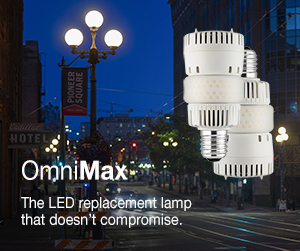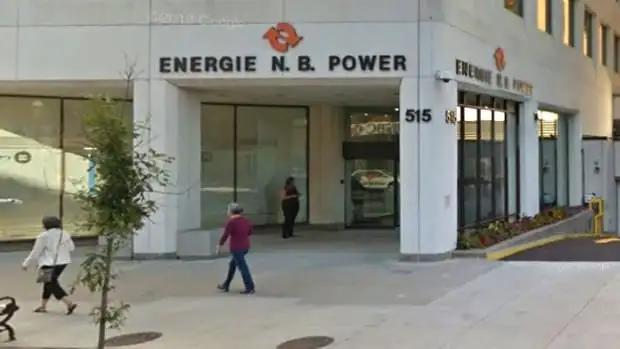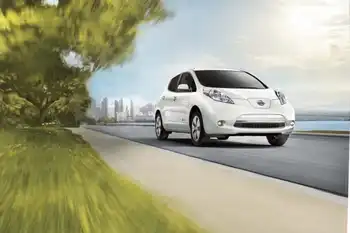Obama Makes His Final Case for Clean Energy as President: Decarbonization Is ‘Irreversible’
Substation Relay Protection Training
Our customized live online or in‑person group training can be delivered to your staff at your location.

- Live Online
- 12 hours Instructor-led
- Group Training Available
Obama Clean Energy Economy underscores renewables-driven growth, decarbonization, and grid modernization, linking emissions standards and the Paris Agreement to job creation in solar, wind, and storage while promoting investor certainty and long-term climate policy.
Key Points
A policy-driven shift leveraging renewables, grid upgrades, and emissions standards to spur growth and cut carbon.
✅ Links decarbonization to immediate economic gains
✅ Emphasizes solar, wind, storage job creation
✅ Supports Paris targets with flexible policy pathways
In his first term, President Obama made clean energy and grid modernization a core part of his plan for revitalizing the U.S. economy. For decades, political leaders flirted with renewables as a way to make the country energy independent -- but it was the first time that a president succeeded at making renewables an economic growth engine.
In his second term, the president shifted his attention to climate change. It became a legacy issue for him. The steady advancement of renewables allowed Obama to make the case that lowering carbon emissions offers an immediate economic benefit, not just a hedge against long-term catastrophe. Federal emissions standards were crafted. And, consequently, a landmark global climate agreement was established.
And with just over a week left as president, Obama is making his final case for the importance of the low-carbon energy transition.
He's both taking a bow and making a plea.
In a piece published in Science magazine this morning, President Obama outlined the economic argument in favor of decarbonizing the energy sector, highlighting clean electricity investment incentives that can accelerate deployment.
"This should not be a partisan issue. It is good business and good economics to lead a technological revolution and define market trends. And it is smart planning to set long-term emission-reduction targets and give American companies, entrepreneurs, and investors certainty so they can invest and manufacture the emission-reducing technologies that we can use domestically and export to the rest of the world," he wrote.
When Obama took office, he was much more cautious about the economic tradeoffs of addressing climate change. But the last eight years have brought radical changes to America's energy landscape.
Wind, natural gas and solar made up 97 percent of electricity capacity additions in 2015. One in 80 jobs since 2009 were created in solar. And since 2008, the cost of wind has fallen 41 percent, the cost of utility-scale solar has fallen 64 percent, and the cost of lithium-ion batteries have fallen 73 percent. In addition, a majority of states are decoupling their carbon emissions from economic growth. These developments make it much easier to lower climate pollution in a cost-effective way and to pursue net-zero electricity by mid-century nationwide, argued Obama.
"The mounting economic and scientific evidence leave me confident that trends toward a clean-energy economy that have emerged during my presidency will continue and that the economic opportunity for our country to harness that trend will only grow."
Of course, the president can't take credit for all the market and policy factors that contributed to those changes over the years. But his early commitment to the sector -- particularly support for clean energy as part of the stimulus package -- made the sector a core part of America's national economic policy. That vision filtered down to states and municipalities, which will continue to decarbonize no matter what federal policy looks like under a Trump presidency.
The president also stressed the importance of upholding international climate commitments, which his administration brokered last year, and pointed to forums like the Katowice climate talks as vital for building consensus. President-elect Trump has repeatedly threatened to abandon America's climate goals, even as a historic U.S. climate bill signals continued momentum at home.
"Were the United States to step away from Paris, it would lose its seat at the table to hold other countries to their commitments, demand transparency, and encourage ambition. This does not mean the next Administration needs to follow identical domestic policies to my Administration’s. There are multiple paths and mechanisms by which this country can achieve -- efficiently and economically -- the targets we embraced in the Paris Agreement," wrote Obama.
Obama only mentioned Donald Trump's name once. He encouraged the incoming president to keep an open mind about how to address the threat of climate change. There are lots of pathways, he argued.
"Of course, one of the great advantages of our system of government is that each president is able to chart his or her own policy course. And President-elect Donald Trump will have the opportunity to do so, with markets responding as Wall Street adjusts to his oil policies in the energy sector. The latest science and economics provide a helpful guide for what the future may bring, in many cases independent of near-term policy choices, when it comes to combating climate change and transitioning to a clean-energy economy," he wrote.
Speaking at MIT this morning, Secretary of State John Kerry echoed the president's argument: "The truth is that climate change shouldn't be a partisan issue. It's an issue that all of us should care about, regardless of political affiliation. [...] It's going to be innovators, researchers, entrepreneurs, and business leaders...who will continue to create the technological advances that forever revolutionize the way we power our world."















